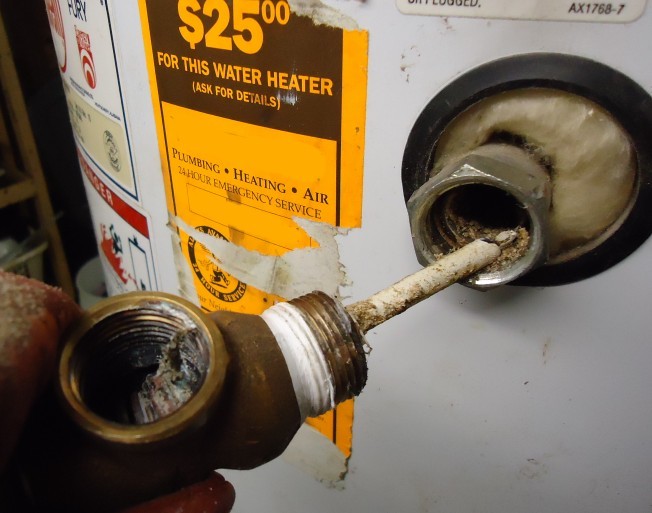Expert Advice on Maintaining Your Home's Hot Water SystemWays to Extend the Life of Your Home's Hot Water System Through Maintenance
Expert Advice on Maintaining Your Home's Hot Water SystemWays to Extend the Life of Your Home's Hot Water System Through Maintenance
Blog Article
In this article below you'll find some first-rate resources relating to How to Maintain a Hot Water Heater in a Few Simple Steps.

Warm water is necessary for day-to-day convenience, whether it's for a revitalizing shower or cleaning meals. To ensure your hot water system runs efficiently and lasts longer, regular maintenance is key. This write-up gives sensible ideas and insights on just how to preserve your home's hot water system to avoid disturbances and pricey repair services.
Intro
Preserving your home's warm water system could appear difficult, however with a couple of straightforward actions, you can ensure it operates smoothly for years ahead. This overview covers whatever from comprehending your warm water system to DIY maintenance tips and recognizing when to contact professional help.
Importance of Preserving Your Hot Water System
Routine maintenance not only extends the life-span of your warm water system but also guarantees it runs efficiently. Overlooking upkeep can cause decreased efficiency, greater energy bills, and also premature failing of the system.
Indications Your Hot Water System Requirements Upkeep
Knowing when your hot water system requires attention can stop major concerns. Keep an eye out for signs such as inconsistent water temperature level, unusual noises from the heating system, or rustic water.
Comprehending Your Hot Water System
Before diving into upkeep jobs, it's valuable to understand the fundamental elements of your warm water system. Normally, this includes the hot water heater itself, pipelines, anode rods, and temperature level controls.
Month-to-month Maintenance Tasks
Normal monthly checks can help capture minor problems before they intensify.
Purging the Water Heater
Flushing your water heater removes sediment buildup, enhancing effectiveness and lengthening its life.
Checking and Changing Anode Rods
Anode rods stop deterioration inside the tank. Checking and changing them when worn out is vital.
Evaluating and Readjusting Temperature Level Settings
Readjusting the temperature level setups ensures optimal performance and safety and security.
DIY Tips for Upkeep
You can execute several maintenance jobs on your own to keep your hot water system in leading problem.
Checking for Leakages
Frequently check pipelines and connections for leaks, as these can bring about water damages and greater bills.
Testing Pressure Alleviation Valves
Examining the stress safety valve guarantees it operates correctly and prevents excessive pressure accumulation.
Protecting Pipes
Shielding warm water pipes decreases warm loss and can save energy.
When to Call a Specialist
While do it yourself maintenance is advantageous, some issues require expert experience.
Facility Concerns Needing Professional Assistance
Examples include major leaks, electric troubles, or if your hot water heater is consistently underperforming.
Regular Specialist Upkeep Benefits
Professional maintenance can include thorough inspections, tune-ups, and making certain compliance with safety criteria.
Verdict
Normal upkeep of your home's hot water system is essential for effectiveness, durability, and expense financial savings. By complying with these ideas and understanding when to seek professional aid, you can make certain a trusted supply of warm water without unexpected disruptions.
How to Maintain an Instant Hot Water Heater
Before tinkering with your hot water heater, make sure that it’s not powered on. You also have to turn off the main circuit breaker and shut off the main gas line to prevent accidents. Also turn off the water valves connected to your unit to prevent water from flowing into and out of the appliance. 2. When you’re done, you have to detach the purge valves’ caps. These look like the letter “T” and are situated on either side of the water valves. Doing so will release any pressure that has accumulated inside the valves while at the same time avoid hot water from shooting out and burning your skin. 3. When the purge valves’ caps are removed, you have to connect your hosing lines to the valves. Your unit should have come with three hoses but if it didn’t, you can purchase these things from any hardware or home repair shops. You can also get them from retail stores that sell water heating systems. Read the user’s manual and follow it to complete this task properly. When the hosing lines are connected, open the purge port’s valves. 4. You should never use harsh chemical cleaners or solutions when cleaning your unit. Make use of white vinegar instead. It should be undiluted and you’ll probably use about 2 gallons. 5. Now flush your water heater. This task should probably take about 40 minutes. We can’t give you specific directions for this because the procedure is carried out depending on the type, model and brand of your heater. With that being said, refer to the user’s manual. 6. When you’re done draining the unit, you have to turn off the purge port valves again. Remove the hosing lines that you earlier installed on each of the water valves. Put the valve caps (purge port) back in their respective places and be very careful so as not to damage the rubber discs that are found inside these caps. 7. Now that everything’s back in place, check your user’s manual again to find out how to reactivate your water heating system. 8. Once it is working, turn one of your hot water faucets on just to let air pass through the heater’s water supply pipes. Leave the tap on until water flows smoothly out of it. https://www.orrplumbing.com/blog/2014/september/how-to-maintain-an-instant-hot-water-heater/

We were introduced to that write-up on Tips For Maintaining Your Hot Water Heater from an associate on our other domain. Remember to set aside a second to promote this content if you enjoyed reading it. We cherish reading our article about How to Maintain a Hot Water Heater in a Few Simple Steps.
Click Here Report this page